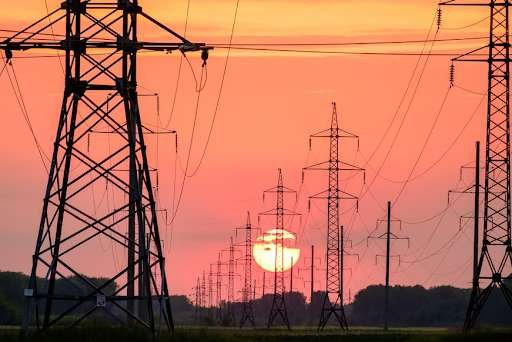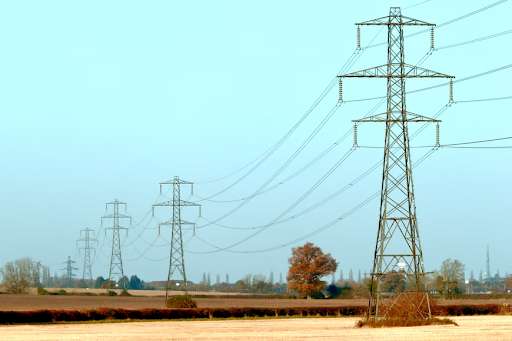The simple act of switching transmission lines is an important part of many electronic devices, allowing them to connect to other pieces of equipment. Transmission line switching allows different pieces of equipment to use the same data or power cable without having both devices connected at once or creating any unintended electrical malfunctions. Here’s what you need to know about how this works and its applications.

What Transmission Line Switching Is
A transmission line allows information (data) or power (electricity) to be carried from one place to another. If two pieces of equipment are plugged into the same cable, they both receive what’s being sent regardless of who the intended recipient was—in other words, whichever device is on the receiving end will get a signal, and both devices will be using the same transmission line simultaneously.
This becomes a problem if it happens unintentionally by having two devices plugged into the same power cable or data line. The electrical properties of this shared medium become disrupted when more than one thing is trying to use it at once, which can cause equipment damage or even put people in danger. Transmission line switching allows information to only flow down the intended-use power cable while sending dead air along another power line allowing for something else to share a space without any interference from either piece of equipment.
The goal of a transmission line switch is to allow a user to connect two pieces of electronic equipment through a single data or power cable while still being able to independently control the connection of each device. This allows for devices that would typically need two power cables or more to function safely and efficiently while having them share a single cable with little to no negative impact on their performance.
How It Works
This is how it all works. Transmission line switching works by using what’s known as a double-pole, double-throw switch (DPDT) or double end break switches to connect or disconnect two separate transmission lines at once. If you want to make it possible for your TV and stereo receiver to both use the same data/power cable without any interference between them, this is how you’d set up the switch:
Switch A connects Terminal 1 (T1) with Terminal 3 (T3), effectively sending dead air down T. Switch B then connects T3 to Terminal 4 (T4), which is the correct output that would supply power to your TV and receiver.
The other set-up you could use would connect T1 and T2 instead of T3 and T4, but this setup requires you to activate both switches in order for either device to function. With this method, you’d need two separate connection cables coming from each device so there’s no interference between them. If you want the ability to independently control the connection of your devices using a single cable, it will be important for you to have either a double-pole/double-throw switch or a double-pole/single throw switch instead.
What This Means For You
Typical setups where transmission line switching technology is applied include televisions that have a gaming console or blu ray player plugged into the same transmission line, allowing you to easily switch between devices with just one data/power cable. This also allows for both playback and power while using only one power cord, saving money by eliminating the necessity of using two separate cables or outlets.
Other applications include being able to keep your computer monitor turned off without turning off its receiver box, letting you save even more on energy costs by having your computer monitor use less electricity when it’s not in use. Also, this works for networks to allow you to have your wired and wireless internet connection running through the same cable, allowing both signals to run simultaneously without interfering with each other.
Lastly, this technology is found in many electronic devices such as printers which are typically plugged into the mains electricity supply at all times but don’t need to be active whenever their host system isn’t powered on. Transmission line switching allows printers to power down but still output data whenever they are needed.
How It Relates To Other Technologies
There are several other technologies related to transmission line switching, including Global System for Mobile Communications (GSM) wireless systems used by cell phones. The GSM system works by using time division multiple access (TDMA) technology to send signals over multiple frequencies at once, which is accomplished through the use of digital signal processing. This allows customers to connect directly without internet connections or landline connections.
As with GSM, you can also find this technology used in the transmission of signals for satellite television providers to allow both services to be able to use the same cable without having any interference between them. This way, you don’t have to switch cables every time you want to change what channel you watching on TV.
Another technology that works, in the same way, is single-frequency networks (SFN), which use different forms of transmission line switching to divide up frequencies, allowing messages sent on one frequency to be received by receivers tuned to another frequency. This technology is used by many television networks as well, but it’s also especially useful for emergency services because operators can simultaneously monitor all signals taking place at once.
How To Fix It A Problem
When two devices are using the same transmission line and one of them is turned off but still sending out data, it will disrupt the flow of information to both devices. If you find that your transmission line switch isn’t working properly, the first thing you should do is check to make sure all cables are plugged in tightly at both ends. Also, be sure there’s nothing blocking the air path between each device so they can communicate effectively. If this doesn’t fix your problem, try unplugging everything from its socket and resetting your entire setup according to the instructions included with your equipment before plugging everything back in again. This often fixes many problems associated with a disrupted transmission line by clearing any leftover data or coding from previous use and allowing the devices to communicate again.

In conclusion, transmission line switching allows you to connect multiple devices using a single cable. This works by using a double-pole/double-throw switch or a double-pole/single throw switch to open and close two separate transmission lines at once, allowing the user to control their connection without interference from other objects. When problems occur with your transmission line switch, make sure all cables are plugged in correctly and be sure there is no residue code blocking either device from connecting properly.

